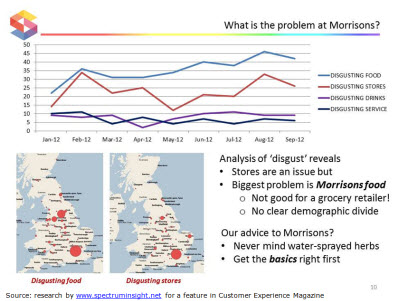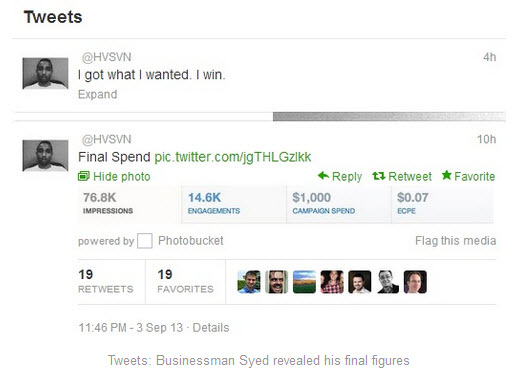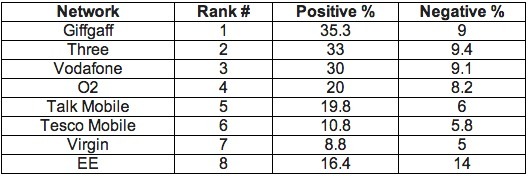
It goes without saying that your attitude towards a social media crisis should be one of anticipation than denial.
You know it’s just a matter of ‘when’ rather than ‘if’. One day something flares up but you are spared. The collective eyeballs of the social web are pulled elsewhere. Other times you remain in the crosshair and become a trending hashtag.
There are just too many variables to anticipate the outcome. Maybe your organisation was stupid. Maybe it was a partner, an employee or a customer. Even a competitor. Could someone have noticed its shadow in an ongoing trend? Or did it snuck up as a ‘one-off’?
All you know for sure is that one day you will be on the agenda, caught in the headlights. Then you must hope all those fire drills pay off and the major team players don’t freeze.
We Are Only Just Getting Started
Such is the inner world of social risk management at this current stage in the game. But there are already signs of the evolution that will inevitably take hold.
Here is an example of an individual with enough confidence and capability to take on a brand for poor service. I’ll summarise the story through an excerpt from Laural Hampton‘s post ‘Should Social Media be a Tool for Consumer Battles?
“Martin Macdonald works for Expedia EAN and is well known and respected in the digital marketing community. He has a good following on all of his social media, and his blog is widely read. As I type this, Martin is launching his campaign against British Gas (and more specifically, @BritishGasHelp ) following unsatisfactory communications with their customer service team.”
Here is another one.
British Airways has been forced to apologise after a Twitter user bought a promoted tweet to complain about the airline losing his luggage.
Hasan Syed, who uses the handle @HVSVN, bought the promoted tweet through the site’s self-service ad platform. The tweet said: “Don’t fly @BritishAirways. Their customer service is horrendous.”
In the first six hours since the tweet was promoted, it had notched up over 25,000 impressions on Twitter. This is how he summarised his efforts once BA had found the luggage and apologised.
A few years ago I wrote about this possibility. Will Consumers Use Social Media Strategically? This behaviour is with us here today.
These brand activists are not yet common. But like Dave Carroll before, their evolutionary value is to contribute new behaviour for others eventually to learn from.
So let’s imagine this continuing. A few more try it. Maybe you get to read about it here or on the Huffington Post. Any of those places constantly on the lookout for new insights into social web behaviour. However you stumble across it, the story sticks.
As a result, maybe it’s you that has a go next time you are aggrieved. Or it’s someone else that notices your retweet. Doesn’t matter. The point is someone picks up the ball and yet more consumers watch and learn.
After a while of that happening what does the next milestone start to look like?
Could we ever reach a point at which organisations are tracked by customers in the same way that brokers and analysts scrutinise an organisation?
Of course their reasons would be different. Maybe for customers, it’s their passion for the brand that inspires them to become guardians of its values.
We’ve already seen that behaviour. When customers are ignored about changes to a product or a logo they will band together and become very vocal.
We know that taking up arms about the employment conditions of a supply chain partner or another ethical issue is no longer confined to the likes of Greenpeace. Passionate consumers have learnt and now do it for themselves. Since subscribing to their newsletter, change.org reminds me every week that I have a voice. Along with 35 million others.
Here is another trend that adds to the mix. An organisation’s performance over social networks is visible and can be judged in whatever ways a third party observer chooses. Anyone with access to a decent social monitoring tool can produce insight into any brand or sector at will. In fact this is becoming a popular means of generating editorial content.
Here is one such example. This was produced as a one off piece of research for a main feature in ‘Customer Experience Magazine’, a UK online title. The retailer on the wrong end of the analysis would have no idea this was coming. 
How long before a consumer group gets their hands on the same technology and start issuing their own bulletins?
Here is another example. UK mobile phone providers. Feedback from my own network of UK and US colleagues suggests how frustrated many of us are with the core experience of these service providers. Smartphones might be the 8th wonder of the world, but……….
In other words, in terms of ‘digital gunpowder’, the conditions are tinder dry! Into that environment, Synthesio has released a social sentiment ranking of these providers. In this instance, it makes grim reading for EverythingEverywhere. (EE)
What is interesting in the context of customer activism is this. The research shows there is clear dissatisfaction with basic network coverage. Many ex-Orange customers judging that coverage has become worse since the merger of the T-Mobile and Orange networks to form EE.
Just how brightly is that frustration burning?
EE’s launch of its 4G network in July had little impact on quelling the intensity or volume of customers’ day-to-day frustrations being shared on forums, Twitter, blogs and Facebook. Makes me wonder how many noticed the BA example discussed earlier? Or for that matter how many run a recording studio or a video company? The set of circumstance to ignite that digital gunpowder are vast in large B2C customer bases.
If you want to dismiss all this as too extreme, then let’s settle with leaderboarding. Anyone can now hire the capability and broadcast their own competency ranking.
This one from Guy Stephens provides a weekly ranking of top performing brands in UK Twitter social customer service. Great to be at the top, but not so good languishing in 81st position. These days you are only as good as your last positive sentiment!
As it happens, Guy is an IBM consultant. But on another day he just might be a consumer who then attracts others to the same interest. Together they watch over the brand they love or hate and make that known. In other words the roles are reversed and customers start running their own Voice of the Customer program. Or should that be Voice Of The Brand?
What’s To Be Done?
Should this ever come to pass, what happens when you find yourself being watched and under scrutiny?
Probably your instinct is to try and hide. If it still does not stop maybe you complain about harassment. After that you probably sulk for a while and feel its just not fair. But at some point you might get smart.
This comes from a realisation that the easiest way forward is to ‘get on the program’. In other words it hurts less doing what is required of you. At that point customers become team coach. Their scrutiny ups your standards and influences your decisions. You listen, you learn and play a better game as a result.
This would have seemed an impossible ambition not so long ago. But now?
main image: purchased from Yay Images







Hi Martin,
It strikes me that there are many businesses or those in business that complain or feel aggrieved at this type of thing happening. However, as power and the locus of control shifts, customers (people) will become increasingly ingenious in getting their voice heard when things happen that they don’t agree with.
This doesn’t make it right not wrong, it’s just what is. We’ll see how far it goes and I am sure that there will be a few who take it too far and act vindictively. When this happens, I think we may see a sort of ‘policing’ the other way but fans of the company. However, until that point businesses, I believe, have two choices: Get better and thus minimise the risk of this happening to you or just get better at dealing with these issues as they crop up. I would say the first route is probably the better route.
Adrian
Who knows how ‘bad’ it may get
Adrian,
Thanks for the observation. Summed up beautifully. Social customer service is becoming the new front line in how customers leverage their POV (point of view)
Martin